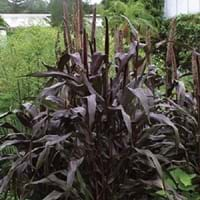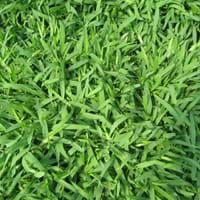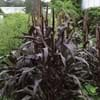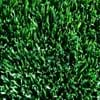Life Span
Annual and Perennial
Perennial
Origin
Africa
Southeastern United States, California, Caribbean
Types
Not Available
Not Available
Habitat
Sunny Edge, Warmer regions
marshes, Swamps, Tropical Climate
USDA Hardiness Zone
8-11
8-11
AHS Heat Zone
12 - 8
12 - 9
Sunset Zone
8, 9, 10, 14, 15, 16, 17, 18, 19, 20, 21, 22, 23, 24
H1, H2, 12, 13, 18, 19, 20, 21, 22, 23, 24
Habit
Upright/Erect
Mat-forming
Minimum Width
Not Available
Flower Color
Brown, Purple, Purplish-black
Not Available
Flower Color Modifier
Bicolor
Bicolor
Fruit Color
Brown, Cream
Non Fruiting Plant
Leaf Color in Spring
Purple, Dark Green, Burgundy
Green
Leaf Color in Summer
Light Green
Light Green
Leaf Color in Fall
Purple, Dark Green, Burgundy
Green
Leaf Color in Winter
Not Available
Green
Leaf Shape
Long Linear
Fin-shaped Tufts
Plant Season
Spring, Summer, Fall
Spring, Summer, Fall, Winter
Sunlight
Full Sun
Full Sun, Partial Sun
Growth Rate
Very Fast
Fast
Type of Soil
Loam, Sand
Loam, Sand
The pH of Soil
Neutral, Alkaline
Acidic, Neutral, Alkaline
Soil Drainage
Well drained
Well drained
Bloom Time
Summer, Late Summer, Early Fall, Fall
Indeterminate
Tolerances
Not Available
Pollution, Salt, Soil Compaction
Where to Plant?
Container, Ground, Pot
Ground
How to Plant?
Seedlings
Plugs, Sod, Sprigs
Plant Maintenance
Medium
Medium
Watering Requirements
Requires regular watering
Average Water Needs
In Summer
Lots of watering
Lots of watering
In Spring
Moderate
Moderate
In Winter
Average Water
Average Water
Soil pH
Neutral, Alkaline
Acidic, Neutral, Alkaline
Soil Type
Loam, Sand
Loam, Sand
Soil Drainage Capacity
Well drained
Well drained
Sun Exposure
Full Sun
Full Sun, Partial Sun
Pruning
Prune in winter, Remove damaged leaves, Remove dead branches, Remove dead leaves
Remove damaged leaves, Remove dead branches, Remove dead leaves
Fertilizers
15-0-15, All-Purpose Liquid Fertilizer
All-Purpose Liquid Fertilizer
Pests and Diseases
Alternaria Leaf Spot, eyespot, Red blotch
Red blotch
Plant Tolerance
Deer resistant, Drought
Drought
Flowers
Showy
Insignificant
Flower Petal Number
Single
Single
Foliage Texture
Coarse
Medium
Foliage Sheen
Not Available
Glossy
Invasive
Sometimes
Sometimes
Attracts
Aphids, Bees, Birds
Not Available
Allergy
Unknown
Congestion, Itchiness, sneezing
Aesthetic Uses
along a porch, deck or patio, Beautification, Informal Hedge, Mixed Border, Showy Purposes, Wild gardens
Beautification
Beauty Benefits
No Beauty Benefits, Not Available
Not Available
Environmental Uses
Air purification
Air purification
Medicinal Uses
Not Available
Not Available
Part of Plant Used
Branch, Flowering Tips, Whole plant
Not Available
Other Uses
Beneficial species for attracting pollinators, repels deer
Used in lawns and turf
Used As Indoor Plant
No
No
Used As Outdoor Plant
Yes
Yes
Garden Design
Bedding Plant, Container, Cutflower, Dried Flower/Everlasting, Mixed Border
Lawns and Turf
Botanical Name
PENNISETUM glaucum 'purple millet'
STENOTAPHRUM secundatum
Common Name
Millet, Pearl Millet
Softleaf Buffalo Grass, St. Augustine Grass
In Hindi
purple millet
St. Augustine Grass
In German
purple millet
St. Augustine Grass
In French
millet pourpre
St. Augustine Grass
In Spanish
purple millet
St. Augustine Grass
In Greek
purple millet
St. Augustine Grass
In Portuguese
purple millet
St. Augustine Grass
In Polish
purple millet
St. Augustine Grass
In Latin
purple millet
St. Augustine Grass
Phylum
Magnoliophyta
Magnoliophyta
Class
Liliopsida
Liliopsida
Order
Cyperales
Cyperales
Genus
Pennisetum
Stenotaphrum
Clade
Angiosperms, Commelinids, Monocots
Angiosperms, Commelinids, Monocots
Subfamily
Panicoideae
Panicoideae
Number of Species
Not Available
Season and Care of Purple Millet and St. Augustine Grass
Season and care of Purple Millet and St. Augustine Grass is important to know. While considering everything about Purple Millet and St. Augustine Grass Care, growing season is an essential factor. Purple Millet season is Spring, Summer and Fall and St. Augustine Grass season is Spring, Summer and Fall. The type of soil for Purple Millet is Loam, Sand and for St. Augustine Grass is Loam, Sand while the PH of soil for Purple Millet is Neutral, Alkaline and for St. Augustine Grass is Acidic, Neutral, Alkaline.
Purple Millet and St. Augustine Grass Physical Information
Purple Millet and St. Augustine Grass physical information is very important for comparison. Purple Millet height is 90.00 cm and width 30.50 cm whereas St. Augustine Grass height is 760.00 cm and width Not Available. The color specification of Purple Millet and St. Augustine Grass are as follows:
Purple Millet flower color: Brown, Purple and Purplish-black
Purple Millet leaf color: Purple, Dark Green and Burgundy
St. Augustine Grass flower color: Not Available
- St. Augustine Grass leaf color: Green
Care of Purple Millet and St. Augustine Grass
Care of Purple Millet and St. Augustine Grass include pruning, fertilizers, watering etc. Purple Millet pruning is done Prune in winter, Remove damaged leaves, Remove dead branches and Remove dead leaves and St. Augustine Grass pruning is done Remove damaged leaves, Remove dead branches and Remove dead leaves. In summer Purple Millet needs Lots of watering and in winter, it needs Average Water. Whereas, in summer St. Augustine Grass needs Lots of watering and in winter, it needs Average Water.





